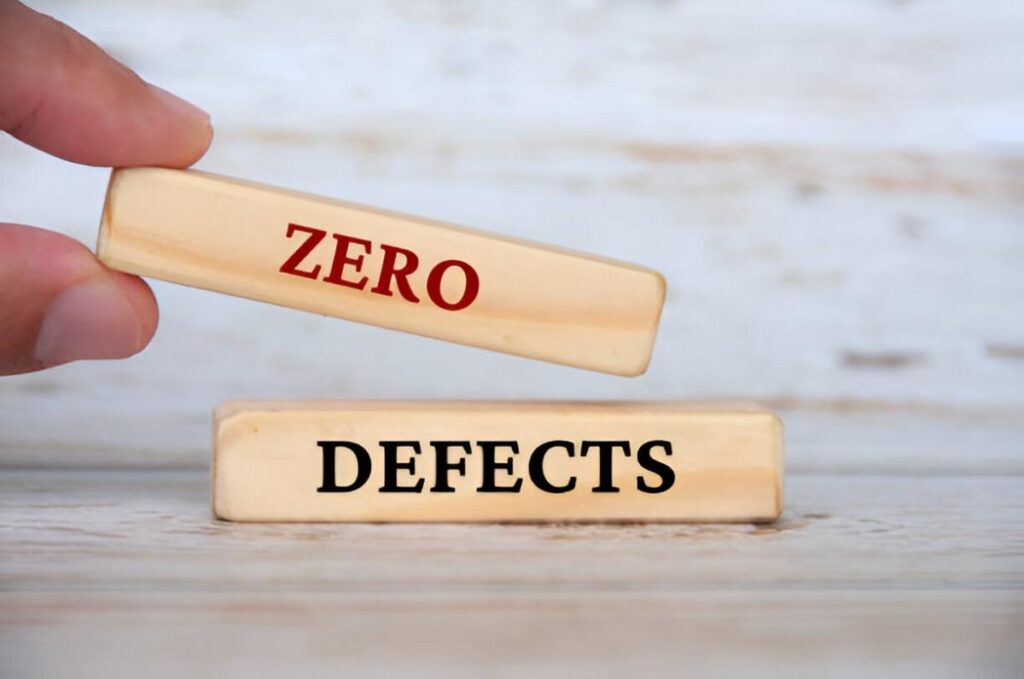Strategic behavior in business is the cornerstone of long-term success. As someone who has spent years analyzing financial strategies and corporate decision-making, I can confidently say that understanding how businesses strategize is not just about predicting outcomes—it’s about shaping them. In this article, I will explore the nuances of strategic behavior, its mathematical underpinnings, and its real-world applications. I will also provide examples and calculations to illustrate key concepts, ensuring that you walk away with actionable insights.
Table of Contents
What Is Strategic Behavior?
Strategic behavior refers to the actions a business takes to achieve its goals while considering the actions and reactions of competitors, customers, and other stakeholders. It’s not just about making decisions in isolation; it’s about anticipating how others will respond. For example, when a company lowers its prices, it must consider whether competitors will follow suit, how customers will perceive the change, and whether the move will lead to long-term profitability.
In the US, where market competition is fierce, strategic behavior often determines which companies thrive and which ones falter. Take the tech industry, for instance. Companies like Apple and Google don’t just innovate; they strategically time product launches, patent filings, and marketing campaigns to outmaneuver competitors.
The Role of Game Theory in Strategic Behavior
Game theory is the mathematical framework that underpins strategic behavior. It helps us model interactions between decision-makers and predict outcomes based on their choices. One of the most famous examples is the Prisoner’s Dilemma, which illustrates how two parties might not cooperate even if it’s in their best interest to do so.
In business, game theory can be applied to pricing strategies, market entry, and even mergers and acquisitions. For instance, consider two competing firms, Firm A and Firm B, deciding whether to lower their prices. If both firms lower prices, they might attract more customers but erode profit margins. If only one firm lowers prices, it might gain market share at the expense of the other.
Let’s model this scenario using a payoff matrix:
| Firm B: Lower Prices | Firm B: Maintain Prices | |
|---|---|---|
| Firm A: Lower Prices | (-5, -5) | (10, -10) |
| Firm A: Maintain Prices | (-10, 10) | (0, 0) |
In this matrix, the numbers represent the payoffs for Firm A and Firm B, respectively. If both firms lower prices, they each lose 5 units of profit. If Firm A lowers prices while Firm B maintains them, Firm A gains 10 units, and Firm B loses 10 units. The Nash equilibrium, a key concept in game theory, occurs when both firms choose to lower prices, even though maintaining prices would be mutually beneficial.
This example shows how strategic behavior can lead to suboptimal outcomes when firms act in their own self-interest without considering the broader impact.
Strategic Behavior in Pricing
Pricing is one of the most critical areas where strategic behavior comes into play. In the US, where consumer choice is abundant, businesses must carefully balance competitiveness with profitability.
Let’s consider a real-world example: the airline industry. Airlines use dynamic pricing algorithms to adjust fares based on demand, competition, and other factors. Suppose two airlines, Delta and United, are competing on a popular route. If Delta lowers its prices, United must decide whether to match the price cut or maintain its current fares.
Using game theory, we can model this decision. Let’s assume the following payoffs:
- If both airlines lower prices, they each earn $50,000 in profit.
- If Delta lowers prices and United maintains them, Delta earns $80,000, and United earns $30,000.
- If United lowers prices and Delta maintains them, United earns $80,000, and Delta earns $30,000.
- If both maintain prices, they each earn $70,000.
The payoff matrix looks like this:
| United: Lower Prices | United: Maintain Prices | |
|---|---|---|
| Delta: Lower Prices | (50, 50) | (80, 30) |
| Delta: Maintain Prices | (30, 80) | (70, 70) |
In this scenario, the Nash equilibrium occurs when both airlines lower prices, even though maintaining prices would yield higher profits for both. This illustrates the challenges businesses face when trying to balance competition and profitability.
Strategic Behavior in Market Entry
Another area where strategic behavior is crucial is market entry. When a company considers entering a new market, it must evaluate the potential reactions of existing competitors.
For example, let’s say I’m analyzing whether a new coffee chain should enter a market dominated by Starbucks. The new chain must consider how Starbucks might respond—whether by lowering prices, increasing advertising, or introducing new products.
To model this, I can use the concept of barriers to entry, which are factors that make it difficult for new firms to enter a market. These barriers can include economies of scale, brand loyalty, and regulatory hurdles.
Suppose the new coffee chain estimates that entering the market will cost $1 million in upfront investment. If Starbucks responds aggressively, the new chain might only earn $500,000 in profit. If Starbucks doesn’t respond, the new chain could earn $2 million.
Using a decision tree, I can calculate the expected value of entering the market:
EV = (Probability\ of\ Aggressive\ Response \times Profit) + (Probability\ of\ No\ Response \times Profit)Assuming a 50% chance of each outcome:
EV = (0.5 \times 500,000) + (0.5 \times 2,000,000) = 250,000 + 1,000,000 = 1,250,000Since the expected value ($1.25 million) exceeds the upfront investment ($1 million), entering the market might be a viable strategy. However, this analysis doesn’t account for non-financial factors, such as brand reputation and long-term competitive dynamics.
Strategic Behavior in Mergers and Acquisitions
Mergers and acquisitions (M&A) are another area where strategic behavior plays a pivotal role. When two companies consider merging, they must evaluate not only the financial benefits but also the potential reactions of competitors, regulators, and customers.
For example, when AT&T attempted to acquire T-Mobile in 2011, it faced significant regulatory hurdles. The US Department of Justice blocked the deal, arguing that it would reduce competition and harm consumers. This highlights the importance of considering external factors when making strategic decisions.
From a financial perspective, M&A deals are often evaluated using the net present value (NPV) method. The NPV calculates the present value of future cash flows generated by the acquisition, minus the cost of the acquisition.
NPV = \sum_{t=1}^{n} \frac{CF_t}{(1 + r)^t} - Initial\ InvestmentWhere:
- CF_t = Cash flow in year t
- r = Discount rate
- n = Number of years
Suppose Company A is considering acquiring Company B for $10 million. The acquisition is expected to generate $3 million in annual cash flows for the next five years. Using a discount rate of 10%, the NPV can be calculated as follows:
NPV = \frac{3,000,000}{(1 + 0.10)^1} + \frac{3,000,000}{(1 + 0.10)^2} + \frac{3,000,000}{(1 + 0.10)^3} + \frac{3,000,000}{(1 + 0.10)^4} + \frac{3,000,000}{(1 + 0.10)^5} - 10,000,000 NPV = 2,727,273 + 2,479,339 + 2,253,944 + 2,049,040 + 1,862,764 - 10,000,000 = 1,372,360Since the NPV is positive, the acquisition could be a sound strategic move. However, this analysis doesn’t account for potential regulatory challenges or integration risks, which are critical considerations in M&A decisions.
The Role of Behavioral Economics
While game theory and financial models provide valuable insights, they often assume that decision-makers are rational and self-interested. In reality, human behavior is influenced by cognitive biases, emotions, and social factors. This is where behavioral economics comes into play.
Behavioral economics studies how psychological factors affect economic decisions. For example, the anchoring bias can lead businesses to rely too heavily on the first piece of information they receive when making decisions. If a company sets its initial price based on flawed market research, it might struggle to adjust its strategy even when new data becomes available.
Another important concept is loss aversion, which refers to the tendency to prefer avoiding losses over acquiring gains. In business, this can manifest as a reluctance to take risks, even when the potential rewards outweigh the potential losses.
Understanding these biases can help businesses make more informed strategic decisions. For instance, by recognizing the anchoring bias, a company might seek multiple sources of data before setting prices or making investment decisions.
Strategic Behavior in a Changing Economy
The US economy is constantly evolving, driven by technological advancements, demographic shifts, and changes in consumer behavior. Businesses must adapt their strategies to stay competitive in this dynamic environment.
For example, the rise of e-commerce has forced traditional retailers to rethink their business models. Companies like Walmart and Target have invested heavily in their online platforms to compete with Amazon. This shift requires not only financial investment but also a strategic realignment of operations, marketing, and customer service.
Similarly, the growing emphasis on sustainability has led many companies to incorporate environmental, social, and governance (ESG) factors into their strategies. This is not just about doing the right thing; it’s about meeting consumer expectations and mitigating risks.
Conclusion
Strategic behavior is the lifeblood of successful businesses. By understanding the principles of game theory, financial modeling, and behavioral economics, companies can make informed decisions that drive long-term success. Whether it’s setting prices, entering new markets, or pursuing mergers and acquisitions, strategic behavior requires a careful balance of competition, collaboration, and adaptability.





